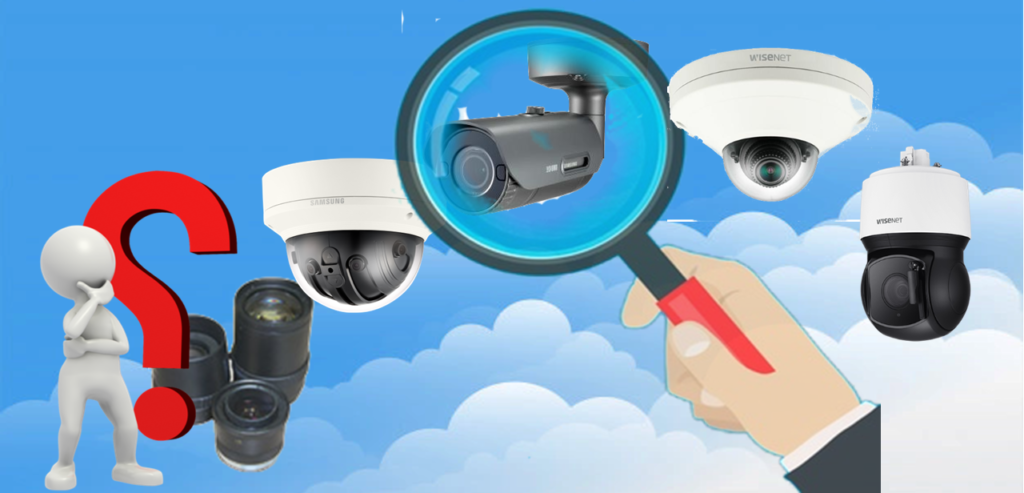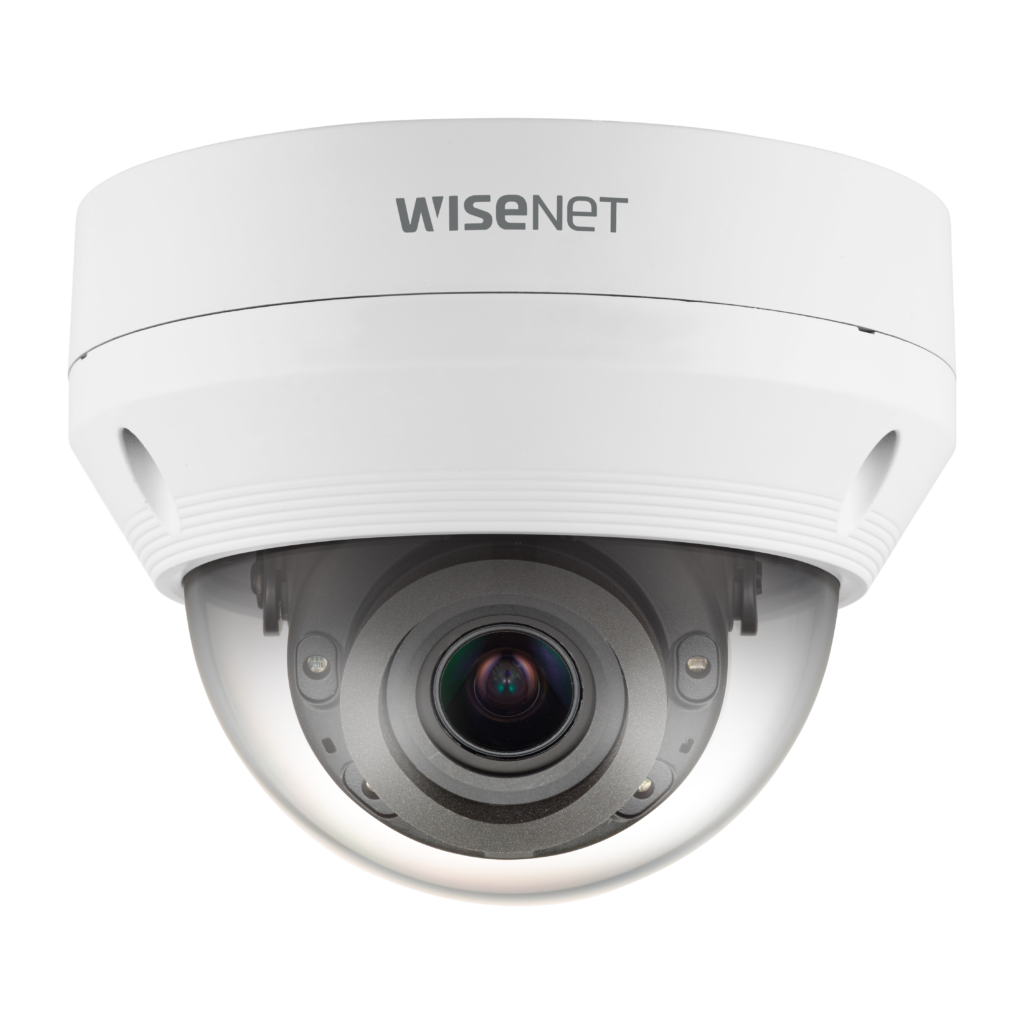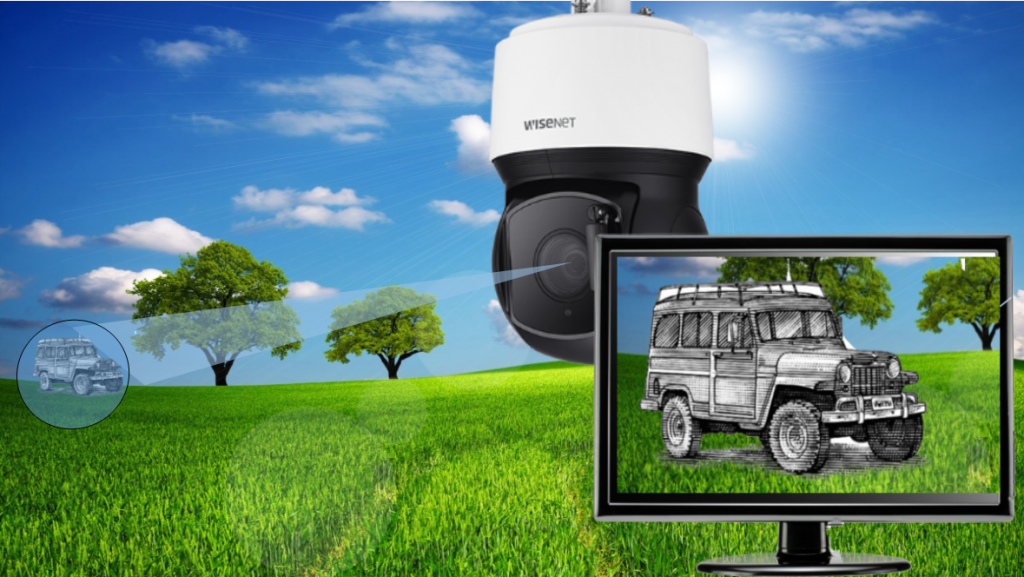What is the Best IP Camera for Your Application

The IP cameras are designed for different applications. What is the best camera for your application? This article compares the different IP cameras and describes the Pros and Cons, and the best place to use each type of camera.
Bullet IP Cameras
Description of the Bullet Camera: A bullet camera has a cylindrical shape. It mounts to a flat surface but can also be attached to a pole with an adapter. The camera is easy to install and mechanically points in the direction you want to view. Most of these cameras are powered using Power over Ethernet (PoE). There are different bullet cameras with a range of options.
Here are some highlights make these cameras useable in a variety of situations.
- Cameras range in price from about $200 to over $1,200.
- Some models include motorized variable lenses that allow you to adjust the magnification from a computer. For example, one of the latest cameras has a 5.2~62.4mm(12x) (54.58°~5.30°) zoom lens
- The 8-Megapixels (4K resolution) models dramatically increase the field of view.
- Most bullet cameras provide at least 0.1 lux of low-light sensitivity, but some, like the XNO-6085R, can see in color at 0.004Lux. This very low-light capability allows you to see in partial moonlight.
- Intelligence: If you would like to receive an immediate notification of an alarm condition, the cameras with AI (Intelligence) are the best type to use. These cost more, but they provide improved security capability.
Pros of Using the Bullet Camera: This camera is designed for outdoor applications. It is easy to recognize as a surveillance camera and see the direction it is pointing. It is easy to install since you don’t have to disassemble the camera to aim the camera. Many bullet cameras include IR illumination and a remote zoom lens.
Cons: Sometimes, we don’t want to show where the camera is pointing. It requires mechanical aiming, so it could need two people to do the installation, with one adjusting the camera and another person viewing the video.
When to use it: The bullet camera is best for outdoor surveillance where you plan to view a fixed area. You should select the camera and lens based on the specific environment. For example, you may require a camera with a wide-angle lens for a doorway or a narrow lens to view a gate.
Dome IP Camera
Description: As the name implies, this IP camera has a dome shape and is usually mounted on the ceiling or wall. There are indoor and outdoor varieties with similar performance to the IP bullet cameras.
Here are some highlights of the IP dome cameras:
- Cameras range in price from about $200 to over $1,500.
- Some cameras include a “hallway view that flips the field of view 90-degrees. This rotates the long side of the field of view to vertical instead of horizontal. It allows you to use the camera to view areas like hallways, tunnels, aisles, and roads.

- Models with advanced features, such as the XNV-8081Z outdoor vandal dome camera, with a modular structure, make it very easy to install. This 5MP camera includes a motorized varifocal lens 2.6x (3.6~9.4mm) (102.5°~38.7°) and remote pan, tilt rotate, and zoom (PTRZ) capability. You can mount the camera and then go to your computer to aim it exactly where you want.
- Low-light capability. Most bullet cameras provide at least 0.1 lux of low-light sensitivity, but some support better than 0.03 Lux. The XNV-6085R delivers one of the lowest light capabilities in color of 0.004Lux.
- Intelligence: Some models include advanced intelligence. If you would like to receive an immediate notification of an alarm condition, the AI (Intelligence) cameras are the best type to use. These cost more, but they provide improved security capability.
Pros of Using the Dome Camera: This camera is smaller than the bullet camera and can hide the lens’s direction, making it a more covert surveillance camera. There is an excellent range of cameras for many different indoor or outdoor applications. The built-in IR and the low-light-level performance make it a good choice for many applications.
Cons: Dome cameras are more difficult to install than bullet cameras. Except for the higher-end cameras with remote pan, tilt, rotation, and zoom makes installation easier.
When to use it: The dome camera is a good indoor camera but can also be used outdoors. You should select the camera and lens based on the specific environment. For example, you may require a camera with a wide-angle lens for a doorway, a 90-degree lens for a room, or a narrow lens to view a hallway.
Pan, Tilt Zoom Cameras

PTZ cameras are very versatile and are used in applications that view large areas and require long-distance viewing.
An IP Pan, Tilt, Zoom (PTZ) camera is a network-attached video camera that can move under the control of a computer mouse, joystick, software, or in an automatic patrol mode. It can move left and right (pan) and up and down (tilt). It also includes a zoom lens. Many of the new PTZ cameras have an IR illuminator and allow viewing in total darkness.
Here are some highlights of the PTZ cameras:
- There are off-the shelf PTZ cameras, and customized PTZ cameras used for special applications.
- The commercially available PTZ cameras range in price from under $1,000 to over $5,000.
- The customized PTZ cameras used for very-long-range applications are over $50,000.
- Many of the PTZ cameras include an IR illuminator. The better cameras have an IR range of up to 500m (1,640ft.)
- The PTZ cameras can pan 360-degrees.
- There are some PTZ cameras, such as the XNP-6550RH that have 55X zoom lenses. It can detect a person over 5 miles away.
Pros of Using the PTZ Camera: PTZ cameras are excellent for watching a very large area. It is easy to move and zoom so you can see the details of a person, vehicle, or other object that’s far away.
Cons: PTZ cameras are usually controlled remotely by a security person. It can miss situations where the camera is not pointing in the right direction.
When to use the PTZ camera: The PTZ camera is best for seeing things that are far away. It can be used to view a road, or remote gate entrances. It can be used at night as long as the field of view is within the range of the IR illuminator.
There are customized PTZ cameras that can be used in total darkness at a long distance. These specialized cameras include both optical and thermal cameras. The cameras with thermal imaging capability can detect objects over one mile away.
Selecting the Right Camera Summary
There are several types of cameras available. It is important to select the cameras that is best for your specific application. Bullet and dome cameras have similar capability but suitle differences that can be important in your usage. The advanced functions can cost more, but can make a big difference in meeting your security objectives.
If you need help selecting the IP cameras in your camera system, please get in touch with us at 800-431-1658 in the USA or 914-944-3425 everywhere else, or use our contact form.